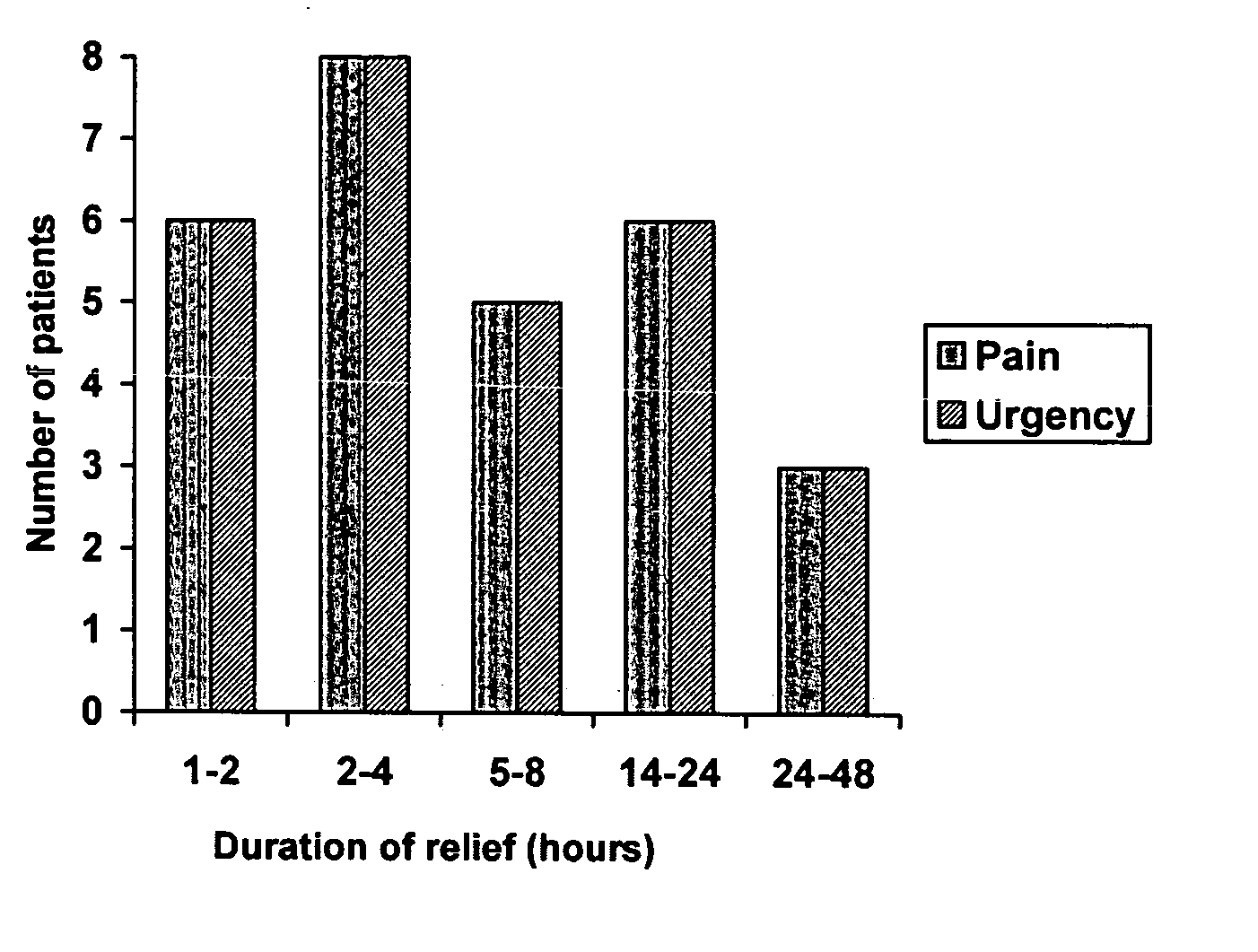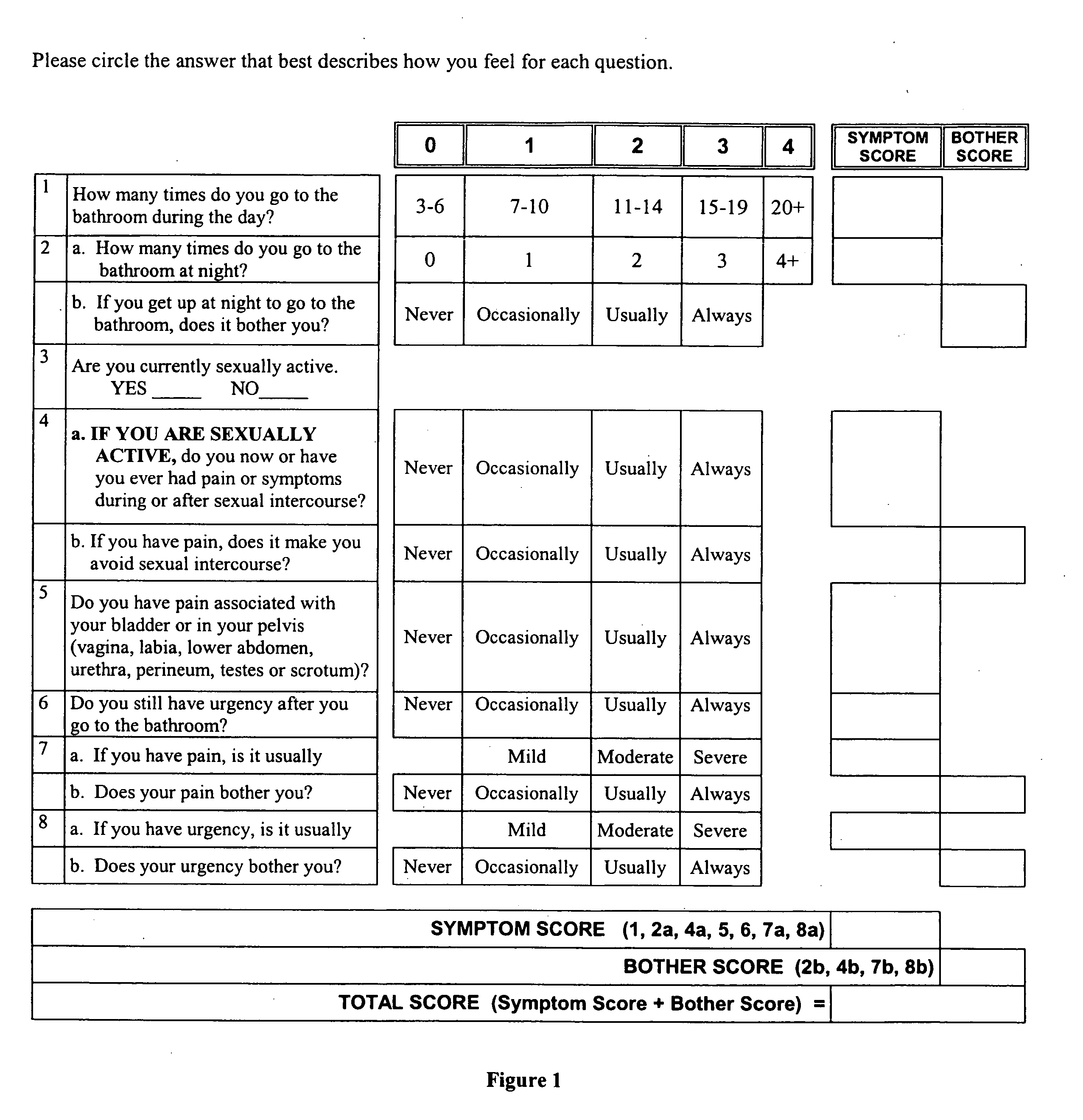Novel interstitial therapy for immediate symptom relief and chronic therapy in interstitial cystitis
a technology of interstitial cystitis and immediate relief, which is applied in the direction of biocide, animal repellents, drug compositions, etc., can solve the problems of pain that is unrelieved by local anesthesia, long treatment time, and minimal effect, so as to improve the integrity of the underlying urothelium, improve the size of the potential market for the compounds used, and improve the effect of detection
- Summary
- Abstract
- Description
- Claims
- Application Information
AI Technical Summary
Benefits of technology
Problems solved by technology
Method used
Image
Examples
example 1
[0145] The IC treatment approach described under Current Practice below represents a therapeutic paradigm of the present invention for IC / LUDE. This paradigm reflects a volume of research and clinical data that has revolutionized our concept of IC pathogenesis, diagnosis, and treatment in recent years. Traditionally considered rare and difficult to manage, IC is now known to be relatively common and highly treatable.
Recognizing IC
[0146] Until recently, the diagnosis of IC was based on criteria, originally developed for research purposes, (Gillenwater and Wein, J Urol 140(1):203-206 (1988)) which describe the relatively rare case of advanced disease. A case of IC usually was not recognized until it was quite severe and had produced bladder lesions that could be seen by cystoscopic examination. As used herein, “cystoscopic examination” and “cystoscopy” refers to an examination that uses a cytoscope. As used herein, “cystoscope” refers to an endoscopic instrument to visualize the lo...
example 2
[0189] Current Practice
[0190] Most patients who have IC / LUDE will benefit from multimodal medical treatment based on heparinoid therapy. As an adjunct to this regimen, a program of intravesical therapy can be beneficial in providing immediate, temporary symptom relief to patients whose disease is more severe or long standing. The multimodal oral treatment regimen for IC has three parts (FIG. 6): heparinoid therapy to restore lower urinary tract epithelial function, tricyclic antidepressant therapy to inhibit neural activation, antihistamine therapy to control any allergies.
[0191] Once other causes have been ruled out, a patient who has signs and symptoms of IC should be started on the treatment regimen described here. If it is the physician's clinical impression that the patient has IC, IC treatment should not be withheld on the basis of a negative PST and / or negative findings on cystoscopy.
Restoring Lower Urinary Tract Epithelial Function
[0192] In some embodiments, PPS is give...
example 3
[0196] At the start of the study, each patient underwent intravesical instillation of a therapeutic solution composed of 40,000 U heparin, 8 mL of 1% lidocaine (80 mg; group 1), and 3 mL of 8.4% sodium bicarbonate suspended in a volume of 15 mL total fluid. After 47 patients had been treated with one instillation of this solution, and no adverse events or side effects had developed, it was decided to increase the amount of lidocaine in the solution. Subsequently, all subjects received this modified solution, which was identical to the original solution, except that it contained 8 mL of 2% lidocaine (160 mg; group 2). All patients were evaluated for pain and urgency relief within 20 minutes of the single instillation. Group 2 patients were evaluated by telephone follow-up 24 to 48 hours after the instillation to determine the duration of their relief. In addition, group 2 patients who elected to receive additional instillations of the 2% lidocaine solution were evaluated to determine...
PUM
| Property | Measurement | Unit |
|---|---|---|
| molecular weight | aaaaa | aaaaa |
| molecular weight | aaaaa | aaaaa |
| molecular weight | aaaaa | aaaaa |
Abstract
Description
Claims
Application Information
 Login to View More
Login to View More - R&D
- Intellectual Property
- Life Sciences
- Materials
- Tech Scout
- Unparalleled Data Quality
- Higher Quality Content
- 60% Fewer Hallucinations
Browse by: Latest US Patents, China's latest patents, Technical Efficacy Thesaurus, Application Domain, Technology Topic, Popular Technical Reports.
© 2025 PatSnap. All rights reserved.Legal|Privacy policy|Modern Slavery Act Transparency Statement|Sitemap|About US| Contact US: help@patsnap.com



